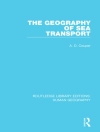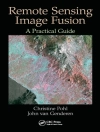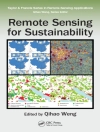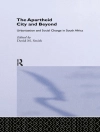In this book, an interdisciplinary research group of faculty members, researchers, professionals, and planners contributed to an understanding of the dynamics and dimensions of emerging challenges and risks in megacities in the rapidly changing urban environments in Asia and examined emerging resilience themes from the point of view of sustainability and public policy. The world’s urban population in 2009 was approximately 3.4 billion and Asia’s urban population was about 1.72 billion. Between 2010 and 2020, 411 million people will be added to Asian cities (60 % of the growth in the world’s urban population). By 2020, of the world’s urban population of 4.2 billion, approximately 2.2 billion will be in Asia. China and India will contribute 31.3 % of the total world urban population by 2025. Developing Asia’s projected global share of CO2 emissions for energy consumption will increase from 30 % in 2006 to 43 % by 2030. City regions serve as magnets for people, enterprise, and culture, but with urbanisation , the worst form of visible poverty becomes prominent. The Asian region, with a slum population of an estimated 505.5 million people, remains host to over half of the world’s slum population . The book provides information on a comprehensive range of environmental threats faced by the inhabitants of megacities. It also offers a wide and multidisciplinary group of case studies from rapidly growing megacities (with populations of more than 5 million) from developed and developing countries of Asia.
Tabla de materias
Introducing Asian Mega City Environment.- Analysing Asia’s mega-cities and mega-urban-region dynamics using Geopolis database.- Future of Asian Mega Cities.- Urban Water Risk in Asian Mega Cities.- Urban Planning, Governance and Management Dealing with Climate Change in Indian Mega Cities.- Japanese Experiences.- Spatial changes in the socioeconomic aspects of the Tokyo metropolitan area after the 1980s.- Urban heat islands in Tokyo.- Osaka as the nation’s second-largest mega city.- distinctive trajectories of industrial, commercial and consumer city.- Indian Experiences.- Chennai: Questioning the sustainability of an emerging mega-city – economy, environment and governance.- Local Action Planning for Pro-Poor Urban governance in the Southern Mega City of Chennai, India.- Population Dynamics in Calcutta Metropolitan Region: Implications for Planning and Governance.- Changing Environment, Physical Landscape and Emerging Heat Islands in Kolkata Metropolitan Region.- Role of local level relative humidity on the development of urban heat island across the Delhi Metropolitan Region.- Urban Political Ecology in megacities: The case of Delhi’s waste water.- Spatial Correlation of Changing Land Use, Surface Temperature (UHI) and NDVI in Delhi Using Landsat Satellite Images.- Housing in Hyderabad.- Nutritional Status of Men and Women in Mumbai: Is There Any Imbalance across Slums and Non-Slums.- Chinese Experiences.- Spatio-temporal evolution of urban structure in Shanghai’.- The Population Distribution and Urban Development polices in Shanghai.- Urban Expansion in the Yangtze River Delta in a High Economic Growth Period-A Comparison between Wuxi and Kunshan in Metropolitan Fringe of Shanghai.- Urban restructuring of Beijing City after the reform and open policy.- Changing Climate and Air Quality in the Fast-urbanization Pearl River Delta region of Southern China.- Urban growth in a rapidly urbanised mega city –Wuhan, P.R.China.- Other Asian Mega Cities Experiences.- Singapore’s Global City Challenges: National Identity, Cosmopolitan Aspirations, Migrant Requirements Urban Development in Ho Chi Minh City, Vietnam.- Spatial Dynamics of the Automobile Industry in the Extended Bangkok Metropolitan Region.- Jakarta Megacity (Jabodetabek): from City Development toward Urban Complex Development System.












